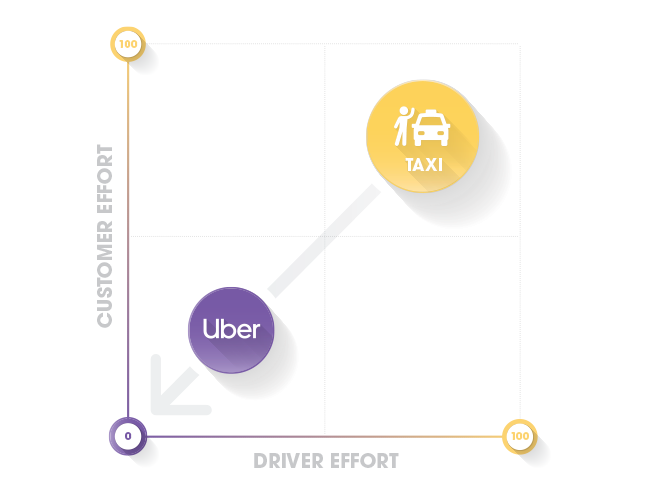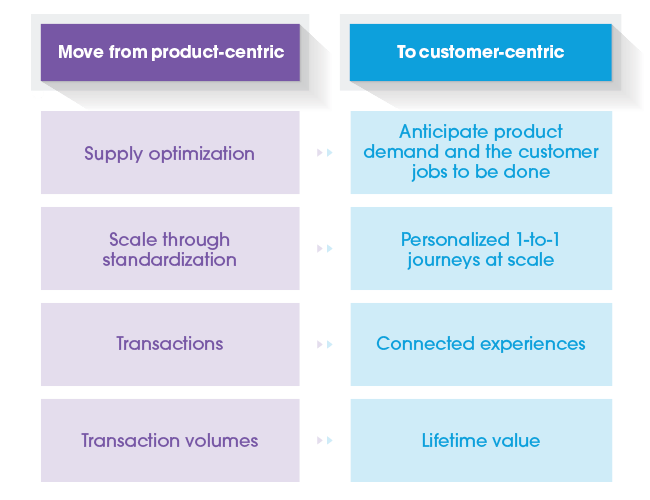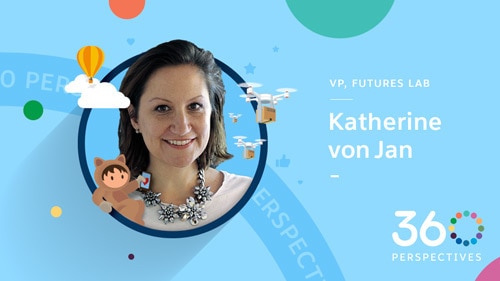Your business processes are your company’s habits — repeatable behaviors that, over time, shape the DNA of every customer and employee experience.
If your organization is like most, process development is an internal product-focused exercise. It’s easy to forget how quickly process bleeds into external experiences until a customer makes an obvious request your process simply can’t accommodate.
Many companies grapple with clunky, antiquated processes optimized to manufacture, market, and distribute products, at the expense of the customer. They now need to reimagine these activities from the customer and the employee’s perspective.
Your goal: Make it easy for employees to make it easy for your customer.
In a customer-centric world, exceeding expectations for customers and employees has become the biggest differentiator, and driver of growth, for every company.
Here’s the evidence, according to research:
- Salespeople — once solely focused on closing transactions — now track customer satisfaction more than any other metric.1
- Nearly half of marketers — once concerned only with driving new leads — now champion customer experience initiatives across their entire companies.2
- Even leaders in information technology (IT) now cite customer experience as their top priority.3
Great experiences reap great rewards, with almost two-thirds of customers willing to pay a premium for them. What’s more, a standout experience with one company prompts nearly three-quarters of customers to hold other companies to higher standards.4

Make it easy for your employees to make it easy for your customers
The heightened stakes for customer expectations mean you have to design not only the selling experience, but also the buying experience.
Think about it: every customer interaction is an experience. You need to audit each of them and evaluate how they grow or diminish your business. Look through the eyes of your customers and redesign what you’re asking them to do.
You can quickly identify product-centric processes by auditing the number of times your team says “you can’t” to a customer. Sorry, you can’t pick up your online purchases in store. Unfortunately, you can’t transfer your reservation to another name because our system doesn’t allow that. No, you can’t bundle those two products together for this purchase or contract.
You see how it adds up.
Customers want the simplest way to get something done. Your goal should be to reduce the amount of effort — or perceived effort — customers have to apply to get what they want. If you ask them to put in effort, they will always find a way to do it easier.
The same goes for employees.
The secret sauce of companies like Uber, Netflix, Disney, and Amazon is that they empower employees as problem solvers. They make it easy for employees to say “yes” to customers.
Think of how Uber redesigned the entire experience of getting a cab. They looked at every area of friction and simply removed it. No standing in the rain hailing a cab, no waiting to exit your ride to pay. At the same time, they make it easy for drivers to find riders. This combination of improved customer and workforce experience revolutionized an industry.

Pick one customer touchpoint to get started
Speak to your customers, and they’ll give you examples of an inconvenient touchpoint with your company. Bring together stakeholders from all of the teams that influence those touchpoints to prioritize and explore how you can design the experience to be more meaningful. Focus on a single touchpoint and the teams, perceived barriers, and time frames needed to address it.
For example, why should customers have to call you if there is an issue? Might you be able to identify the issue and proactively engage to solve it? With the right data and processes in place, an airline can recognize you will miss your connection and automatically rebook you on the next flight, before you even realize there was an issue.
Put yourself in your customer’s shoes and imagine what they need, when, and why. Find a way of making it effortless for them to get what they need. Together with peers in other departments, go through this thought exercise about recentering processes around customers. How can you move from the company-first processes on the left to the customer-first options on the right?

Your core process design will shift from solely optimizing transaction volume to anticipating customer demand and the jobs customers want done. This change will take time. But the initial step in the process is clear: customers first.
Learn more in our Customer 360 Playbook based on thousands of working sessions and projects with C-suite leaders. To follow this series, subscribe to our blog newsletter or check out our last installment on the importance of changing mindsets in your organization.
This post is part of a regular series called 360 Perspectives, featuring customers, partners, and experts unraveling the complexities of what it takes to change mindsets, connect silos, and put the customer at the center of their business.
1Salesforce, State of Sales, May 2018.
2Salesforce, State of Marketing, December 2018.
3Salesforce, Enterprise Technology Trends, May 2019.
4Salesforce, State of the Connected Customer, June 2019.





























